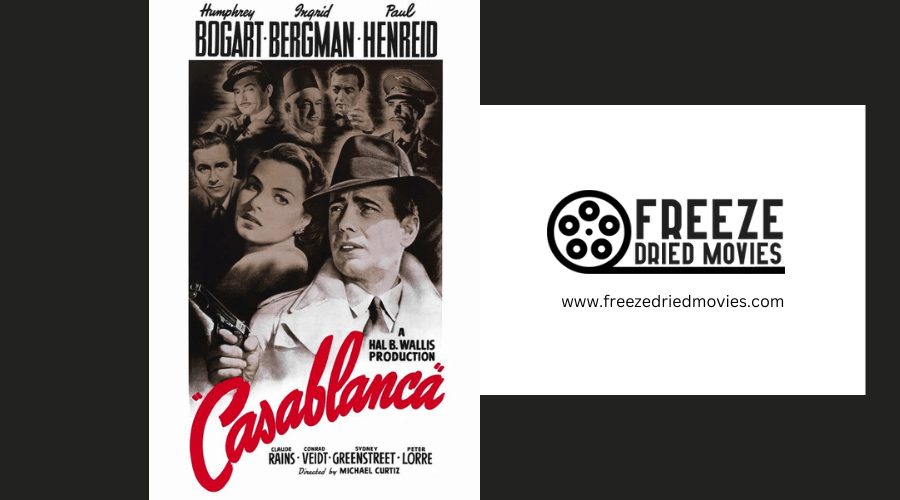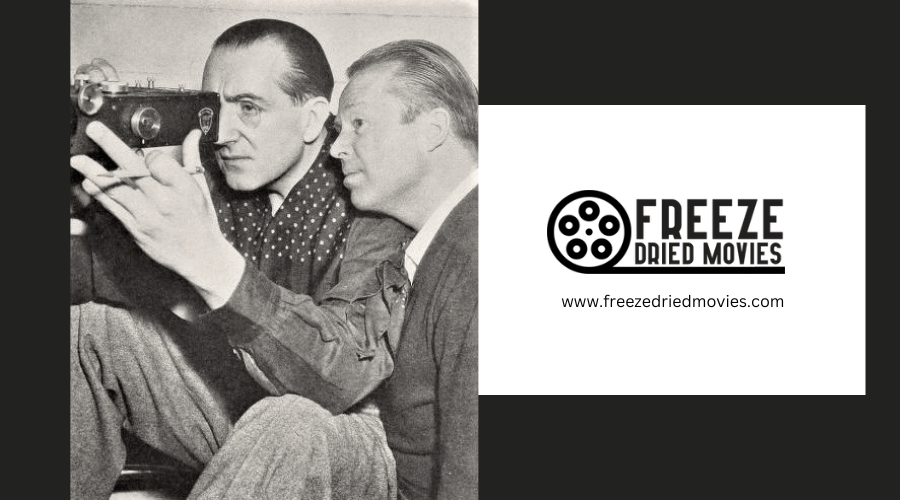What Movie Genre Was Popular in the 1940s?

The 1940s saw a rich diversity of movie genres that captured the complexities of the era. Film Noir stood out with its shadowy visuals and morally ambiguous characters, while War Dramas reflected the global conflict's impact. Musicals offered an enchanting escape from the harsh realities of the time. These genres not only entertained but also mirrored society's struggles and aspirations. What other genres shaped this crucial decade, and how did they resonate with audiences?
Film Noir
Film noir, a genre that emerged in the 1940s, is renowned for its dark themes, moral ambiguity, and complex narratives featuring anti-heroes and femme fatales. Films like *Double Indemnity* (1944) and *The Maltese Falcon* (1941) delve into betrayal, greed, and the darker aspects of human nature, often presenting morally ambiguous characters that blur the lines between heroes and villains.
One of the most distinctive features of film noir is its visual style. Drawing from European neo-realism and expressionist techniques, directors employed chiaroscuro lighting to create high-contrast visuals that emphasize shadows and light, giving scenes a tense, mysterious atmosphere. This lighting technique, combined with urban settings, immerses viewers in a world where danger lurks around every corner.
Iconic directors such as Billy Wilder and Alfred Hitchcock were instrumental in defining the genre. Hitchcock's *Notorious* (1946) is a prime example, blending suspense with noir elements. The classic period of film noir lasted until the late 1950s, with *Touch of Evil* (1958) often cited as one of the last films of this influential movement. Film noir's legacy continues to influence modern cinema, showcasing its timeless allure.
War Dramas

When you think of 1940s war dramas, World War II narratives immediately come to mind, dominating the genre with their focus on heroism and sacrifice. Post-war romantic dramas like *Casablanca* intertwined love with wartime intrigue, capturing hearts and minds. These films didn't just entertain; they resonated with audiences by reflecting the period's realities and boosting morale.
Dominance of WWII Narratives
During the 1940s, war dramas dominated the cinematic landscape, reflecting the pervasive impact of World War II on society. These films captured the essence of heroism, sacrifice, and patriotism, resonating deeply with audiences living through the global conflict. Movies such as *Casablanca* (1942) and *The Best Years of Our Lives* (1946) not only entertained but also examined the emotional and psychological struggles faced by soldiers and civilians alike.
| Movie Title | Release Year | Themes | Impact |
|---|---|---|---|
| *Casablanca* | 1942 | Love, loyalty, wartime tension | Showcased complexities of relationships during war |
| *The Best Years of Our Lives* | 1946 | Veterans' struggles, reintegration | Highlighted challenges faced by returning soldiers |
| *All Quiet on the Western Front* | 1930 | Psychological impact of war | Set the precedent for future war narratives |
| *Sergeant York* | 1941 | Heroism, personal sacrifice, patriotism | Inspired national unity and elevated morale |
These war dramas didn't just serve as a form of escapism; they were instrumental in enhancing morale and promoting national unity. By portraying the harsh realities of war and the courageous acts of individuals, they influenced public sentiment and reinforced the values of bravery and resilience. The success of these films also laid the groundwork for the enduring popularity of war narratives in Hollywood, ensuring that the stories of wartime heroism and sacrifice continued to be told for generations.
Post-War Romantic Dramas
In the aftermath of World War II, post-war romantic dramas captivated audiences by exploring themes of love and sacrifice against the backdrop of societal recovery. These films often mirrored the emotional toll of war and societal anxieties, offering a poignant exploration of personal relationships during turbulent times.
Consider these key aspects of post-war romantic dramas:
- Wartime Intrigue: Films like *Casablanca* (1942) masterfully blended romance with wartime intrigue, illustrating the complexities and moral dilemmas faced by lovers during the war.
- Veterans' Challenges: *The Best Years of Our Lives* (1946) highlighted the struggles of returning veterans, portraying their difficult reintegration into civilian life and the impact of war on their personal relationships.
- Reconciliation and New Beginnings: Many films in this genre, such as *Now, Voyager* (1942), emphasized stories of reconciliation and personal transformation, offering hope and romantic fulfillment amid adversity.
- Triumph Over Adversity: These romantic dramas often depicted love triumphing over adversity, resonating with audiences who yearned for escapism and optimism during uncertain times.
Through these narratives, post-war romantic dramas provided a sense of comfort and reflection, making them a beloved genre of the 1940s. They helped audiences navigate the complexities of love and sacrifice in a world recovering from conflict.
Musicals
Musicals surged in popularity throughout the 1940s, offering much-needed escapism during and after World War II. Audiences flocked to theaters for lively performances and elaborate dance numbers that provided a temporary respite from their everyday worries. Despite high production costs, the success of musicals was undeniable, greatly contributing to the film industry's economic recovery post-war. The genre offered a rich cinematic experience, enhanced by the use of multitrack recording technology that allowed for more complex and engaging audio.
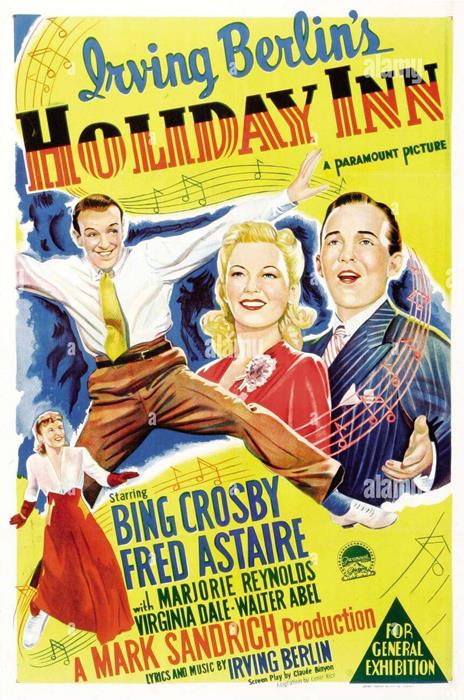
Major studios capitalized on this trend, producing lavish films that became cultural touchstones. Movies like *Holiday Inn* (1942) introduced timeless songs such as "White Christmas," while *Meet Me in St. Louis* (1944) showcased Judy Garland's exceptional talents. These films did more than entertain; they resonated deeply with audiences, offering a sense of hope and joy during tumultuous times. The elaborate sets, costumes, and high-energy performances made musicals a staple of 1940s cinema. The genre's ability to deliver escapism and emotional uplift solidified its place as a beloved and profitable part of film history during this decade.
Comedies

Comedies in the 1940s captivated audiences with fast-paced dialogue and absurd situations, reflecting societal shifts and a craving for escapism after World War II. These films provided much-needed relief from the harsh realities of the time, blending humor and wit in ways that still resonate today.
Key highlights include:
- "Arsenic and Old Lace" (1944): Featuring Cary Grant, this dark comedy revolves around his aunts' lethal secret, showcasing Grant's comedic talent.
- Screwball Comedies: Howard Hawks' "His Girl Friday" (1940) epitomizes this subgenre with its rapid-fire exchanges and electric chemistry between the leads.
- Road Comedies: The "Road to" series, starting with "Road to Morocco" (1942), features Bob Hope, Bing Crosby, and Dorothy Lamour in a series of delightful adventures.
- Abbott and Costello: Their iconic routine "Who's On First?" became a comedy staple, highlighting their impeccable timing and wordplay.
Comedies of the 1940s often combined elements of romance and suspense, as seen in Alfred Hitchcock's "Mr. & Mrs. Smith" (1941). These films didn't just entertain; they offered a clever escape from everyday life, using humor as a powerful tool for connection and relief.
Gangster Films

During the 1940s, while audiences enjoyed the lighthearted escape provided by comedies, another genre emerged that delved into the grittier aspects of human nature: gangster films. These movies evolved from romanticized portrayals of criminals to more violent and psychologically complex characters, reflecting societal anxieties post-Great Depression. The genre's revival was marked by the success of *High Sierra* (1941), featuring Humphrey Bogart, which showcased the darker side of criminal life.
| Film Title | Year | Notable Actor | Director | Key Theme |
|---|---|---|---|---|
| High Sierra | 1941 | Humphrey Bogart | Raoul Walsh | Psychological struggles |
| Key Largo | 1948 | Edward G. Robinson | John Huston | Moral dilemmas |
| White Heat | 1949 | James Cagney | Raoul Walsh | Betrayal and violence |
| The Maltese Falcon | 1941 | Humphrey Bogart | John Huston | Greed and deception |
| The Big Sleep | 1946 | Humphrey Bogart | Howard Hawks | Crime and corruption |
Film noir elements, such as chiaroscuro lighting and intricate narratives, became prominent in gangster films, enriching character development and storytelling. Directors like John Huston were pivotal in shaping this genre, especially through collaborations with Bogart, highlighting themes of greed, betrayal, and the psychological struggles of criminals. These films not only captivated audiences but also mirrored the darker undercurrents of society during that period.
Road Films
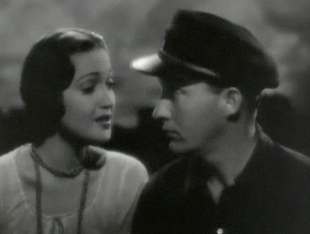
In the 1940s, road films captivated audiences with their blend of comedic adventures and iconic stars like Bob Hope, Bing Crosby, and Dorothy Lamour. Beginning with *Road to Singapore* (1940), these films offered humorous journeys abroad, showcasing the chemistry between the leads and providing much-needed escapism during wartime. The genre's success laid the groundwork for future road comedies, influencing their structure and style for years to come.
Iconic Road Film Stars
The allure of road films in the 1940s was undeniable, captivating audiences with their blend of comedy, adventure, and music. A key component of this genre's success was its iconic stars: Bob Hope, Bing Crosby, and Dorothy Lamour, who first teamed up in *Road to Singapore* in 1940. This trio's on-screen chemistry turned them into household names and made the road film a cherished escape for many.
Here's why these stars were so iconic:
- Bob Hope's wit and comedic timing: Bob Hope was the heart of the road films, bringing his unique brand of humor to every scene. His quick wit and impeccable timing made each film a laugh-out-loud experience.
- Bing Crosby's charm: Crosby's smooth voice and relaxed demeanor balanced Hope's zaniness, adding an allure that resonated with audiences.
- Dorothy Lamour's charisma: Lamour provided a captivating presence, often playing the love interest and adding depth to the comedic trio.
- Themes of travel and escapism: The road film series offered a break from wartime worries, whisking viewers away to exotic locales filled with adventures.
These elements made the road films a standout genre in the 1940s.
Comedic Adventures Abroad
Building on the charm of the iconic duo, the comedic adventures abroad in the 1940s road films brought laughter and escapism to audiences keen for a break from reality. These road films, particularly the ones starring Bob Hope and Bing Crosby, gained immense popularity. With titles like *Road to Morocco* (1942) and *Road to Utopia* (1946), the series captivated viewers by transporting them to exotic locations filled with humorous mishaps and light-hearted plots.
These films didn't just rely on comedy; they also incorporated musical elements, adding to their widespread appeal. Whether it was a catchy song or a hilarious skit, the blend of music and comedy kept audiences entertained and uplifted during the post-WWII period.
The road film genre, especially this series, tapped into the collective desire for escapism, providing a temporary getaway from daily stresses. Featuring a total of seven films, culminating in *The Road to Hong Kong* (1962), this genre set a successful template for future road comedies. The mix of adventure, humor, and music resonated deeply, making these films timeless classics that still evoke laughter and joy.
Iconic Performances
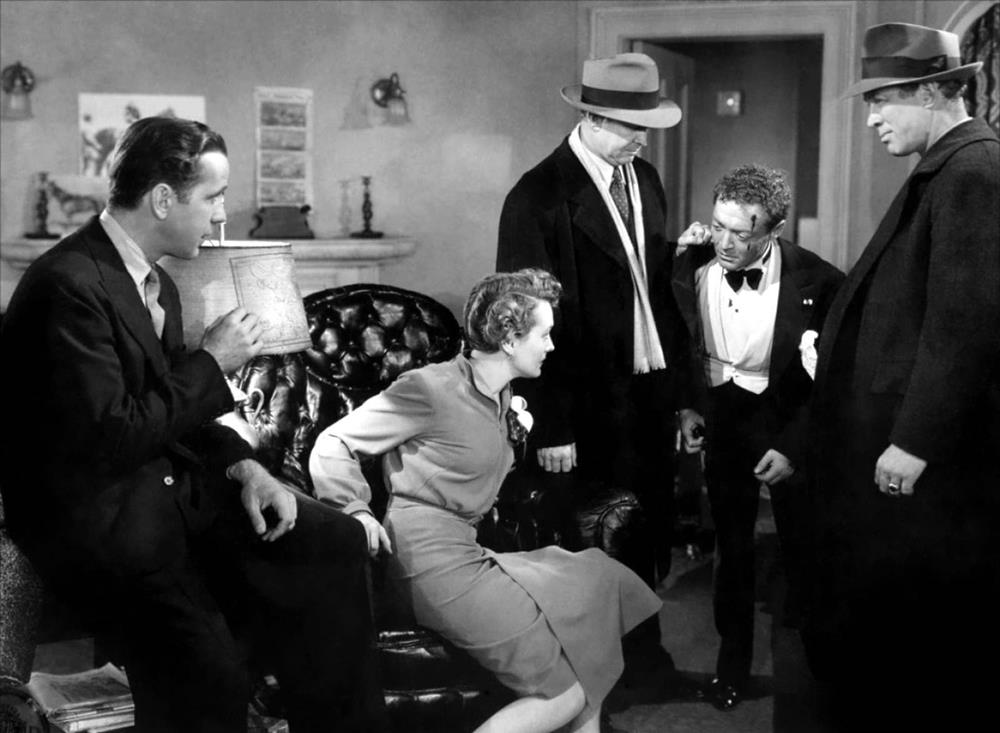
Iconic performances of the 1940s left an indelible mark on cinema, showcasing the remarkable talents of actors who defined that era. These performances not only brought the characters to life but also solidified the films' places in cinematic history. Let's investigate some standout moments:
- Humphrey Bogart in *The Maltese Falcon* (1941): Bogart's portrayal of private detective Sam Spade is one of his most iconic performances. His nuanced acting helped establish film noir as a dominant genre of the period.
- Ingrid Bergman in *Casablanca* (1942): Bergman's role as Ilsa Lund created unforgettable romantic tension, making *Casablanca* a staple in romantic drama.
- Bette Davis in *Now, Voyager* (1942): Davis's portrayal of a repressed woman finding love and self-acceptance earned critical acclaim, showcasing her incredible range as an actress.
- Cary Grant in *Arsenic and Old Lace* (1944): Grant displayed his comedic genius in this darkly humorous film, seamlessly blending suspense and laughter.
These performances captivated audiences and demonstrated the versatility and depth of 1940s cinema, making the decade a golden period for film enthusiasts.



